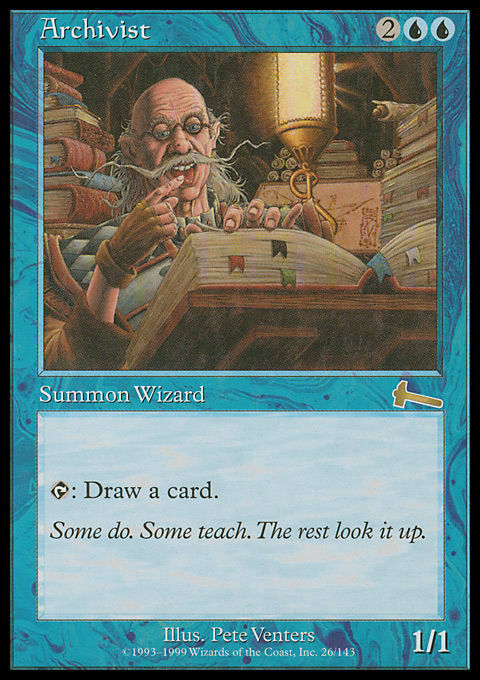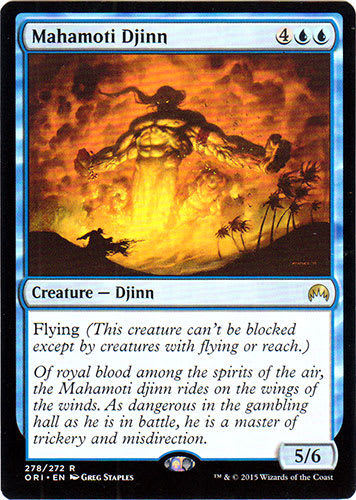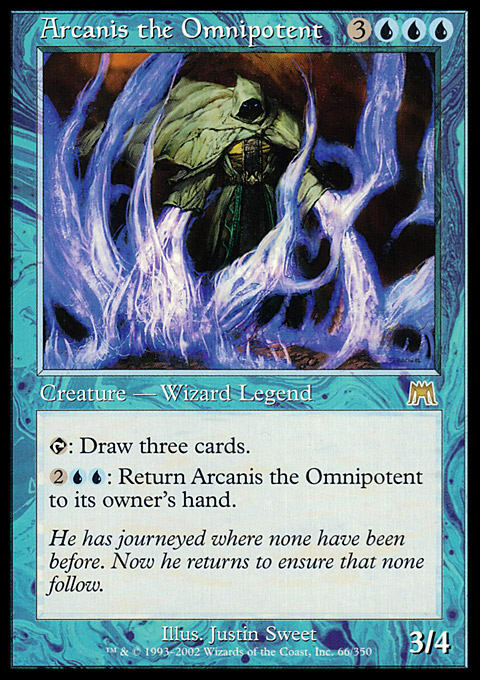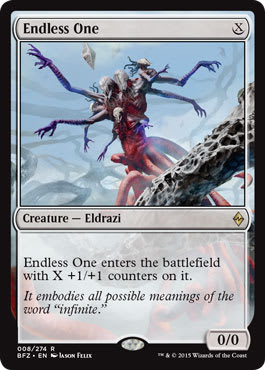Last week we kicked off a history of Magic through the lens of the Mono-Blue Theme Decks and Intro Packs. Although history has not been kind to some of them, we at least managed to end on a high. Wizards went from strength to strength with two very playable Mono-Blue decks, as the second set of Kamigawa Block hit the shelves.
Year: 2005
Set: Betrayers of Kamigawa
Deck: Ninjutsu
Rares: Higure, the Still Wind, Tomorrow, Azami's Familiar
Ninjutsu ? Betrayers of Kamigawa Theme Deck | Wizards of the Coast
- Creatures (22)
- 1 Higure, the Still Wind
- 1 Soratami Mirror-Guard
- 1 Teardrop Kami
- 1 Tomorrow, Azami's Familiar
- 1 Walker of Secret Ways
- 2 Kaijin of the Vanishing Touch
- 2 Minamo Sightbender
- 2 Soratami Cloudskater
- 2 Student of Elements
- 3 Mistblade Shinobi
- 3 Ninja of the Deep Hours
- 3 River Kaijin
- Instants (3)
- 1 Hinder
- 1 Lifted by Clouds
- 1 Minamo's Meddling
- Enchantments (8)
- 1 Field of Reality
- 2 Genju of the Falls
- 2 Phantom Wings
- 3 Mystic Restraints
- Artifacts (3)
- 1 Shuriken
- 2 Ronin Warclub
- Lands (24)
- 24 Island
What better way to kick off our coverage with a delightfully innovative entry from Betrayers of Kamigawa. As we noted last week, to this point many of the Mono-Blue decks tended to be cut from a very recognizable pattern of evasion and permission. Start with a gaggle of flying creatures, throw in some counters and card drawing spells, and you had a deck.
The previous year, Darksteel had brought us Transference, a deck that while it was nearly Blue in name only, nevertheless bought something new and innovative to the table. Using the set’s modular mechanic, it was packed with artifact creatures that took advantage of what it offered. Ninjutsu does the same, highlighting a mechanical element of its set rather than just rehashing the stock template.
For Ninjutsu, the mechanic is in the name. The deck looks to use the ninjutsu ability to generate virtual card advantage. Lead with cheap creatures, like Teardrop Kami, Student of Elements, or Soratami Cloudskater. Then once you have the ability to attack unchecked, the shenanigans can commence. Bring in the Mistblade Shinobi to Unsummon an opponent’s best creature, or draw cards with the Ninja of the Deep Hours.
To avoid running out of steam, there’s a Walker of Secret Ways to bring your Ninja back to hand to ambush again, and Higure, the Still Wind can fetch reinforcements from your deck. You also have recourse to plenty of evasion effects to optimize your chances of getting through uncontested. Lifted by Clouds and Phantom Wings both grant flying, which as it happens is just the triggering mechanism the Student of Elements needs to lift your entire army aloft. Soratami Mirror-Guard can make smaller creatures unblockable, and Higure, the Still Wind can do the same for his Ninja.
All decks have their weaknesses, of course, and Ninjutsu was no different. Although it had trickery and deception for days, it didn’t pack a very strong punch. Most of the creatures had only 1 power, so if the “ninja engine” didn’t click, it tended to flounder. And sometimes even when it did click, it wasn’t quite enough. Still, a unique approach and a unique deck surely deserves recognition.
Year: 2005
Set: 9th Edition
Deck: Lofty Heights
Rares: Archivist, Mahamoti Djinn
Lofty Heights ? 9th Edition Theme Deck | Wizards of the Coast
- Creatures (14)
- 1 Archivist
- 1 Aven Fisher
- 1 Aven Windreader
- 1 Azure Drake
- 1 Mahamoti Djinn
- 1 Puppeteer
- 1 Storm Crow
- 1 Thieving Magpie
- 3 Horned Turtle
- 3 Wind Drake
- Instants (4)
- 1 Mana Leak
- 1 Remove Soul
- 2 Boomerang
- Sorceries (1)
- 1 Sleight of Hand
- Enchantments (2)
- 1 Confiscate
- 1 Telepathy
- Aritfacts (2)
- 1 Kraken's Eye
- 1 Rod of Ruin
- Lands (17)
- 17 Island
Decks like Ninjutsu particularly stand out because of decks like Lofty Heights, which returns to the well-worn formula of generic Blue effects and generic Blue evasive creatures. It’s not entirely fair to knock these efforts, because the design philosophy of the Core Set Theme Decks was to offer players a look at what each color typically does. A sort of “baseline identity.”
Furthermore, the Core Sets of this stage of the game were constituted entirely of reprints. Remember, when Magic 2011 introduced the idea of a “retuning core set mechanic,” that was a very radical departure from the game’s history. The original Core Sets were intended to be a series of reprints, so that folks coming into the game would have a solid foundation to build upon.
That helps explain why we find so many familiar faces here. Horned Turtle, Wind Drake, and Thieving Magpie were all in the Blue Theme Decks for 7th and 8th Edition. Confiscate and Boomerang, 7th Edition. Remove Soul, Puppeteer, and Mana Leak, 8th Edition. By this point, Lofty Heights begins to resemble a “greatest hits” album.
So, what does the deck offer that’s new? Not a lot. Fans of repetitive memes will note the presence of “the most broken card in all of Magic,” Storm Crow. There’s also a Kraken's Eye, one of the modern-era “lucky charms” that became a Core Set staple. And as a closer, the deck leans on Mahamoti Djinn, a classic Blue finisher from the earliest days of the game.
But aside from that, it’s stall the ground game (Horned Turtle, Puppeteer), attack in the air (Wind Drake, Azure Drake, Mahamoti Djinn), draw more cards (Thieving Magpie, Archivist) and disrupt your opponent (Remove Soul, Mana Leak, Boomerang). Solidly by-the-numbers stuff.
Year: 2007
Set: Planar Chaos
Deck: Ixidor’s Legacy
Rares: Aeon Chronicler, Serendib Sorcerer
Ixidor?s Legacy ? Planar Chaos Theme Deck | Wizards of the Coast
- Creatures (28)
- 1 Aeon Chronicler
- 1 Brine Elemental
- 1 Crookclaw Transmuter
- 1 Jodah's Avenger
- 1 Merfolk Thaumaturgist
- 1 Ovinomancer
- 1 Serendib Sorcerer
- 1 Slipstream Serpent
- 1 Willbender
- 2 Aquamorph Entity
- 2 Coral Trickster
- 2 Dream Stalker
- 2 Fledgling Mawcor
- 2 Primal Plasma
- 2 Riptide Pilferer
- 2 Shaper PArasite
- 2 Tidewalker
- 3 Fathom Seer
- Instants (6)
- 1 Piracy Charm
- 1 Pongify
- 2 Erratic Mutation
- 2 Ovinize
- Enchantments (2)
- 2 Unstable Mutation
Surprise! The wild-and-crazy block of Magic offers a deck that does wild-and-crazy things!
Planar Chaos was the second set in Time Spiral block, and it had a huge bag of tricks to draw from. The deck was themed around Ixidor, a character in the storyline of 2002-03’s Onslaught Block. He was an illusionist who gained the power to sculpt reality, and in this deck that’s represented by the themes of shapeshifting and manipulation of creatures’ power and toughness.
Morph makes a return here, which had been introduced in Onslaught as well, and the morph cards here are all meant to be tricky. Fathom Seer, Coral Trickster, Riptide Pilferer, Willbender, Shaper Parasite, these were all utility cards that offered a different spell-like ability that you could unleash by unmorphing them at an opportune time.
Others could play at creature’s stats. The deck included a lethal two-card combo of Serendib Sorcerer (which can make any creature a 0/2) and Merfolk Thaumaturgist (which could then kill it by making the creature a 2/0). Indeed, it had a number of small interactions between cards, such as including a Dream Stalker as a “reset button” for cards like Aquamorph Entity, Primal Plasma, and Tidewalker.
In contrast to most other mono-Blue decks, the noncreature supporting suite was surprisingly creature-centric. Ovinize and Pongify played to themes of polymorphing, while Unstable Mutation and Erratic Mutation played in the power/toughness space much of the deck occupies.
Like Ninjutsu, the deck was fun to play when it came together. The problem with a deck full of tricks is that sometimes tricks are all you find. If you got the wrong pieces, or couldn’t field a decent threat to actually chip away at your opponent’s life total, then you didn’t get very far. But that’s the risk you run, and decks that take chances are often the most memorable ones. Who looks back on their long preconstructed history and says, man, I remember how much fun I had playing Lofty Heights?
Year: 2007
Set: 10th Edition
Deck: Arcanis’s Guile
Rares: Arcanis the Omnipotent, Denizen of the Deep
Arcanis?s Guile ? 10th Edition | Wizards of the Coast
- Creatures (10)
- 1 Air Elemental
- 1 Arcanis the Omnipotent
- 1 Aven Fisher
- 1 Denizen of the Deep
- 1 Phantom Warrior
- 1 Thieving Magpie
- 2 Cloud Elemental
- 2 Sage Owl
- Instants (8)
- 1 Boomerang
- 1 Telling Time
- 2 Cancel
- 2 Remove Soul
- 2 Unsummon
- Sorceries (3)
- 1 Tidings
- 2 Counsel of the Soratami
- Artifacts (2)
- 1 Kraken's Eye
- 1 Rod of Ruin
- Lands (17)
- 17 Island
Named after another Onslaught character, Arcanis the Omnipotent was a legendary pit-fighter but altogether lesser character in the storyline. Still, each of the five mono-color Theme Decks from 10th Edition were based on a reprinted Legend. White had Cho-Manno (a rebel leader from Mercadian Masques), Black had Ascendant Evincar (Crovax from Tempest), Red had Kamahl, Pit Fighter (a main protagonist in the Odyssey/Onslaught Blocks), and Green went with Molimo (the Maro-Sorcerer featured in Invasion).
Although the legendary “cycle” lends a new face to these decks, it’s nothing we haven’t seen before. Phantom Warrior, Aven Fisher, Air Elemental, and Remove Soul are all familiar faces, and the deck’s two artifacts (Kraken's Eye, Rod of Ruin) are the exact same two in Lofty Heights. The new cards do the same things in a slightly different way, such as card drawing (Counsel of the Soratami) or countermagic (at long last, Cancel).
Year: 2016
Set: Oath of the Gatewatch
Deck: Twisted Reality
Rares: Deepfathom Skulker, Endless One
Twisted Reality ? Oath of the Gatewatch Intro Pack | Wizards of the Coast
- Creatures (29)
- 1 Bane of Bala Ged
- 1 Deepfathom Skulker
- 1 Endless One
- 1 Kozilek's Pathfinder
- 1 Prophet of Distortion
- 1 Ruination Guide
- 1 Thought Harvester
- 1 Tide Drifter
- 2 Eldrazi Skyspawner
- 2 Gravity Negator
- 2 Kozilek's Channeler
- 2 Murk Strider
- 2 Salvage Drone
- 2 Walker of the Wastes
- 3 Blinding Drone
- 3 Cultivator Drone
- 3 Mist Intruder
- Instants (5)
- 1 Adverse Conditions
- 1 Scour from Existence
- 1 Titan's Presence
- 2 Spatial Contortion
- Lands (26)
- 10 Wastes
- 14 Island
- 1 Blighted Cataract
- 1 Evolving Wilds
With the end of the Theme Deck era in 2008 and onset of the Intro Pack, the Mono-Blue deck virtually disappears. This is in large part that themes and mechanics are no longer the driving consideration behind the design, but rather there’s the additional aim of providing tutorial products to new players. Very few mono-color Intro Packs are produced, though we did see a Mono-Blue Event Deck with Magic 2012’s Illusionary Might (tribal Illusions).
Still, last year’s Oath of the Gatewatch did at last snap the drought. Just as Core Set Theme Decks seemed to be echoes of one another, so this deck is a very distinct echo of 2004’s Transference. I’d mentioned above that the deck was essentially “Blue in name only.” In 2004, that was due to a preponderance of Artifact creatures. This time around, it’s because of devoid Eldrazi ones.
While Transference was equally tribal, the focus there was mechanical. Here, the Eldrazi have little to do with one another, but instead are there to illustrated the devoid marker mechanic, ingest and processors, and colorless mana. And along the way, it assembled a deck that performed quite well. With a very strong mana curve, loads of creature options, and activated effects for sinking mana into later in the game, this deck was markedly different from the usual Blue permission/evasion archetype.
In addition, the colorless mana and Wastes added an element of the exotic, a new resource to play with (even if it had more or less been “hidden in plain sight” for the game’s history). It’s a good note to end on.
I hope you’ve enjoyed this walk through Magic’s amazing history, and see you next week!
































